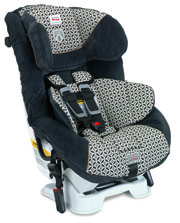By Jeri Tulley
Know Your Needs
Before purchasing a car seat, think about your driving habits, priorities, and budget. Do you run a lot of errands where the convenience of an infant carrier is needed? An extra base is handy if you’ll frequently switch vehicles. For long-distance drivers, extra padding and additional safety features such as side–impact protection are worth the additional expense. When pricing seats, be aware of the height and weight limits of your options. When you’ve narrowed the choices, check the National Highway Traffic Safety Administration’s 2008 Car Seat Ease-of-Use Ratings.
New Is Best
Never buy a second-hand car seat without knowing its history. Extreme temperatures, previous accidents, and age can cause damage to the internal structure. Car seats actually expire—usually five to seven years after the manufacture date. Missing parts (including instructions) and unknown recalls are possible problems, too. The U.S. Government’s Vehicle Safety Hotline, 800.424.9393, provides recall information.
Try a Dry Run
Long before you give birth, take out your car seat and read the manual. Explore the new seat until you know how everything works. Send in the registration form so you can be contacted in the event of a recall. Order a spare car-seat pad for the inevitable diaper leaks, spit up, and spills, because most padding needs to drip-dry. And of course, wash and dry the padding on your new seat. Then install it right away—don’t wait for your water to break!
Install It Right
Jennifer McMeans, a certified car-seat safety technician at Safe Kids Worldwide, says that four out of every five seats checked nationwide are installed incorrectly. Free car-seat safety checks are offered regularly through local fire stations, police stations, and hospitals. Find one near you by entering your zip code at seatcheck.org. Certified technicians can demonstrate how to correctly install your seat and answer your questions. McMeans recommends a check before and after baby arrives, plus any time you change seats, or change from rear-facing to forward-facing. When appropriate, use your vehicle’s LATCH (Lower Anchors and Tethers for Children) anchor bars to install your seat.
Mind the Rules
Infants must ride rear-facing until at least 1 year old and 20 pounds in weight. However, the American Academy of Pediatrics, Safe Kids Worldwide, and the National Highway Traffic Safety Administration recommend keeping children rear-facing until they reach the height or weight limits of the seat.
The safest place to install the restraint is in the center of the second row of seats. Never place a rear-facing car seat in front of an active airbag. Once installed, the seat should not move more than one inch side-to-side or front-to-back and should recline no more than 45 degrees, so that the baby’s head stays in contact with the seat and his airway stays open.
Good to Know:
Read the American Academy of Pediatrics’ report Car Seat Safety: A Guide for Families 2008.
Chicco KeyFit 30 Infant Car Seat in Adventure has a single-pull LATCH adjustment and side levels to easily check for proper installation. Its weight range accommodates babies from 4 to 30 pounds. $180
Maxi-Cosi Mico Infant Car Seat in Chili Pepper, built to Europe’s high standards, is so popular there that “Maxi” is short for car seat. Super lightweight for use as a carrier, it features a secure and cozy infant insert. $170
Good to Know:
Each year many babies are accidentally left behind in cars. Always keep your purse on the floor in the back seat, so you’ll be sure to look there when you get out of your car. Source: Safe Kids Worldwide
Peg Perégo Primo Viaggio SIP 30/30 Infant Car Seat in Paloma is side-impact protected and safe for babies up to 30 inches and 30 pounds. The cover is made of an ultra-soft, breathable microfiber for easy clean-up. $290
Good to Know:
Never hold your child on your lap in a moving car. Safety experts refer to this as the “child crusher” position. Source: AAA
Evenflo Symphony All-in-One Car Seat in Liberty works for children from 5 to 100 pounds; the SureLatch system makes it a snap to install. It reclines for better car naps and is also side-impact tested. $200
Good to Know:
Move your baby to face forward only when you can answer “yes” to either of these questions: Does he exceed the car seat’s rear-facing height and weight limits? Is his head within 1 inch of the car-seat top? Source: Safe Kids Worldwide
Alpha Omega Elite Convertible Car Seat in Automotive Gray can be used from infancy on up to 100 pounds. First, use the easy-to-adjust harness up to 50 pounds, then the seat works with your car seat belt as a booster. $170
Good to Know:
Healthycar.org rates infant car seats based on hazardous chemical content. Motherproof.com’s top-rated 2008 cars, based on ease of car-seat installation and overall family comfort:
• Chrysler Town & Country
• Volvo XC70
• Hyundai Veracruz
• Chevy Malibu
• Mazda CX-7
• Toyota Highlander Hybrid
Britax Boulevard CS Car Seat in Riviera offers side-impact protection that’s third-party tested. Made in the U.S., it has a snug harness indicator that clicks when it’s appropriately tight. Use rear-facing from 5 to 35 pounds; forward-facing from 20 to 65. $330
